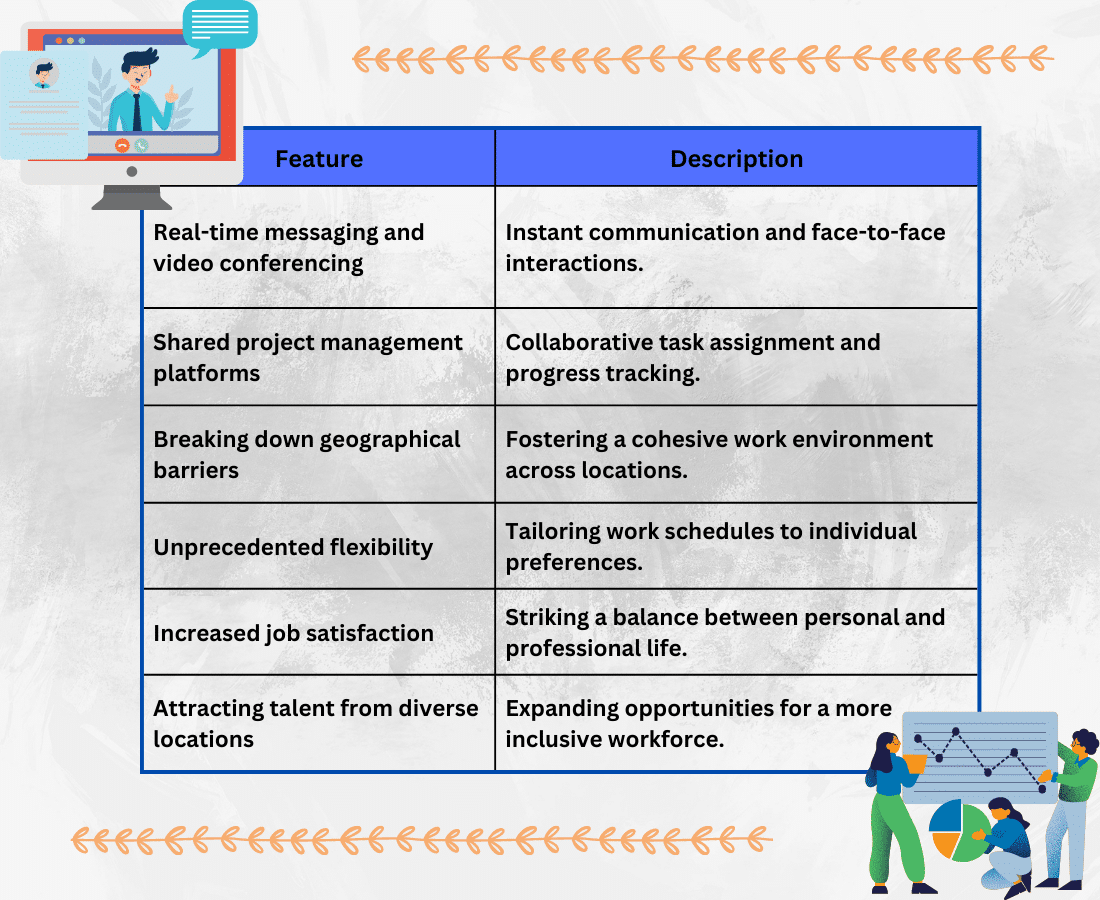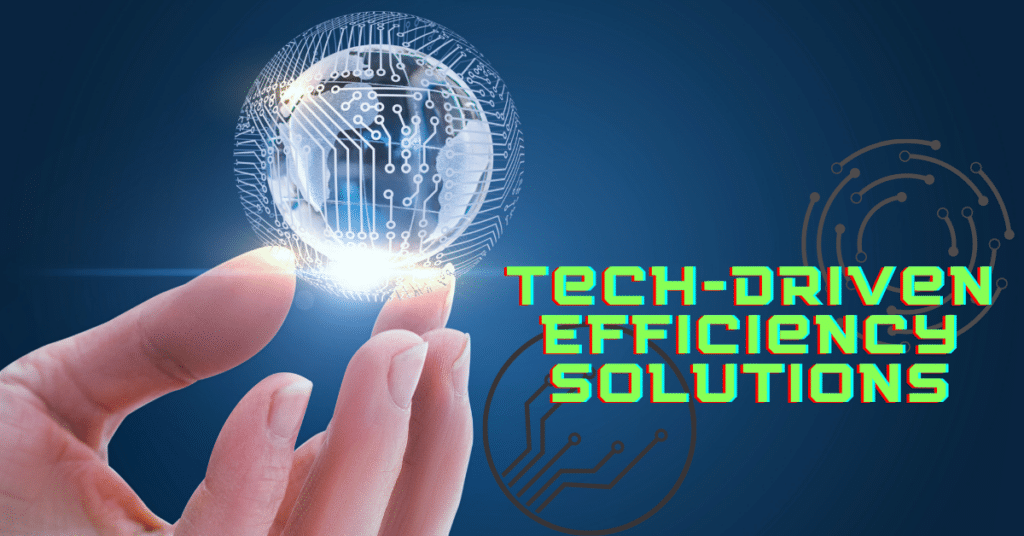In today’s fast-paced and technologically advanced world, the role of technology in streamlining work efficiency has become paramount. Modern technologies offer many solutions to optimize productivity and streamline workflows, from automation and project management tools to data analytics and artificial intelligence. Embracing these technological advancements can significantly impact how businesses and professionals operate, enabling them to achieve more with less effort and time. In this post, we will explore the diverse ways technology influences work efficiency, uncovering how organizations and individuals can harness these innovations to stay ahead in the competitive landscape and drive success.

Embracing Automation: How Technology Can Handle Repetitive Tasks

Embracing automation is a transformative step towards enhancing work efficiency by harnessing the power of technology to handle repetitive tasks. In today’s fast-paced business landscape, organizations and individuals alike can benefit immensely from automating mundane and time-consuming activities. By entrusting these tasks to technology, professionals can free up valuable time and resources, allowing them to focus on more strategic and creative endeavors. Automation reduces the risk of errors and increases productivity and throughput, enabling businesses to accomplish more in less time. From routine data entry to email responses and process workflows, automation streamlines operations, leading to smoother and more efficient workflows. Embracing automation is more than mere convenience; it is a game-changer that empowers individuals and organizations to unlock their true potential and achieve greater levels of success.
Leveraging Project Management Tools for Enhanced Productivity
Leveraging project management tools is a key strategy for achieving enhanced productivity in today’s dynamic work environments. Innovative tools offer a centralized platform for project planning, execution, and tracking, promoting seamless collaboration and task management. Features like task assignment, progress monitoring, and milestone tracking ensure transparency and accountability throughout the project lifecycle. By streamlining communication and facilitating resource allocation, these tools help teams optimize their workflow and meet deadlines with efficiency. From small businesses to large enterprises, embracing project management tools has become essential for staying organized, driving productivity, and ultimately delivering successful outcomes.

Task Organization and Delegation
In the pursuit of enhanced productivity, effective task organization and delegation play a crucial role, and project management tools excel in this aspect. These tools empower project managers to break down complex projects into smaller, manageable tasks and allocate them to the appropriate team members. With clear task descriptions, deadlines, and priority levels, team members can quickly grasp their responsibilities and deadlines. The ability to create task dependencies ensures that the project progresses smoothly, with one task triggering another upon completion. This streamlining of jobs minimizes confusion and promotes a more structured workflow. Moreover, project management tools often offer task assignment notifications, ensuring that team members are promptly informed when new tasks are assigned to them.
Key features:
- Task breakdown and categorization for improved clarity.
- Efficient assignment of tasks to relevant team members.
- Task dependencies to maintain a logical project flow.
- Task assignment notifications to keep everyone informed.
Real-Time Progress Tracking and Reporting
Project management tools provide real-time progress tracking and reporting capabilities, allowing teams to monitor project status and performance at any moment. These tools typically offer interactive dashboards that display task completion rates, timelines, and other essential project metrics. Tasks marked as completed automatically update progress, providing stakeholders with a clear and up-to-date project overview. These tools also generate customizable detailed reports, offering insights into team productivity, potential bottlenecks, and adherence to timelines. Real-time tracking and reporting foster transparency, empowering project managers to make data-driven decisions and implement necessary adjustments promptly.
Key features:
- Interactive dashboards with real-time project status updates.
- Task completion tracking for accurate progress monitoring.
- Customizable reports to analyze project performance.
- Data-driven insights to facilitate informed decision-making.
Collaboration and Communication Features
Effective collaboration and seamless communication are pivotal in ensuring project success, and project management tools are designed to facilitate both. These tools act as centralized platforms where team members can share files, discuss tasks, and exchange ideas in real-time. The ability to leave comments, tag team members, and engage in threaded discussions simplifies communication, keeping all relevant information within the project context. Additionally, some project management tools integrate with messaging and video conferencing platforms, providing teams with more versatile communication channels. Through improved collaboration and communication, project members can work cohesively, addressing challenges together and capitalizing on collective expertise.
Key features:
- File sharing and storage for easy access to project-related resources.
- Real-time commenting and discussion threads for contextual communication.
- Integration with messaging and video conferencing tools for seamless interaction.
- Collaborative environments that encourage teamwork and shared problem-solving.

Communication Tech: Bridging Gaps and Facilitating Collaboration
Communication technology plays a pivotal role in bridging gaps and facilitating seamless collaboration in the modern workplace. With the increasing prevalence of remote work and geographically dispersed teams, effective communication has become more crucial than ever. Communication tools and platforms offer a wide array of features, such as instant messaging, video conferencing, and virtual meeting spaces, enabling team members to connect and collaborate in real-time. These technologies break down barriers of distance and time zones, fostering a sense of teamwork and camaraderie regardless of physical location. By encouraging swift information exchange and facilitating quick decision-making, communication tech empowers organizations to respond rapidly to challenges and opportunities. Ultimately, it nurtures a collaborative work environment that enhances efficiency, creativity, and productivity, propelling businesses toward success in the digital age.
Virtual Workspaces and Remote Tools: Empowering a Mobile Workforce
Virtual workspaces and remote tools have emerged as powerful enablers, empowering the modern mobile workforce to thrive in a digitally connected world. These innovative technologies transcend the constraints of traditional office settings, allowing employees to work efficiently from anywhere with internet access. Remote collaboration tools provide seamless communication, project management, and file-sharing capabilities, ensuring teams remain cohesive and productive despite geographical dispersion. Virtual workspaces offer centralized platforms where teams can access resources, documents, and updates in real-time, fostering a collaborative and organized work environment. Embracing virtual workspaces and remote tools not only boosts workforce flexibility and satisfaction but also reduces overhead costs for businesses. With a growing emphasis on work-life balance and flexibility, these technologies represent a paradigm shift in how work is conducted, championing a more agile and efficient workforce for the future.

Seamless Collaboration Across Geographical Boundaries
Virtual workspaces and remote tools have revolutionized the way teams collaborate, transcending geographical boundaries and time zones. With these technologies, distance is no longer a hindrance to effective communication and teamwork. Real-time messaging and video conferencing tools enable instant and face-to-face interactions, allowing team members to discuss ideas, resolve issues, and make decisions collaboratively. Furthermore, shared project management platforms enable teams to assign tasks, track progress, and update project statuses collectively. By breaking down barriers, virtual workspaces and remote tools promote a cohesive work environment, fostering a sense of unity and camaraderie among team members who may be scattered across different regions or countries.
Key Points:
- Real-time messaging and video conferencing for instant communication.
- Shared project management platforms for collaborative task tracking.
- Breaking down geographical barriers for cohesive teamwork.
Enhanced Flexibility and Work-Life Balance
Embracing virtual workspaces and remote tools grants unparalleled flexibility, allowing professionals to tailor work schedules to their needs. Remote work fosters a work-life balance, boosting job satisfaction and reducing burnout. Choosing their environment – home, coworking space, or while traveling – empowers employees to optimize productivity and eliminate commuting stress. Remote work attracts talent globally, promoting inclusivity. Emphasizing flexibility and work-life balance enhances overall employee well-being, fostering a positive and motivated workforce.
Key Points:
- Unprecedented flexibility in tailoring work schedules.
- Increased job satisfaction and reduced burnout.
- Attracting talent from diverse locations for a more inclusive workforce.

AI and Machine Learning: Unleashing the Potential of Smart Workflows

AI and Machine Learning are transforming the landscape of work efficiency by unleashing the potential of smart workflows. These cutting-edge technologies can analyze vast amounts of data, identify patterns, and make data-driven predictions, all in real time. By automating complex processes and decision-making, AI and Machine Learning alleviate the burden of repetitive tasks, allowing professionals to focus on high-value initiatives. From optimizing supply chains and resource allocation to personalized customer interactions and predictive maintenance, AI-driven smart workflows enhance productivity and accuracy across diverse industries. Embracing AI and Machine Learning not only streamlines operations but also paves the way for innovation and strategic growth, making them indispensable tools in today’s quest for unprecedented work efficiency and success.
Conclusion

In summary, this post explored the multifaceted role of technology in streamlining work efficiency through a range of innovative approaches. By embracing automation, businesses and professionals can delegate repetitive tasks to technology, allowing them to focus on more critical endeavors. Leveraging project management tools fosters enhanced productivity, enabling teams to organize, track, and complete tasks efficiently. Communication technologies bridge gaps and facilitate collaboration, breaking down barriers for effective teamwork. Virtual workspaces and remote tools empower a mobile workforce, granting flexibility without compromising productivity. Furthermore, the potential of AI and machine learning is harnessed to unleash smart workflows, making data-driven decisions and optimizing processes. As technology continues to advance, integrating these strategies will undoubtedly be crucial in staying competitive, boosting efficiency, and achieving success in the dynamic world of work.













